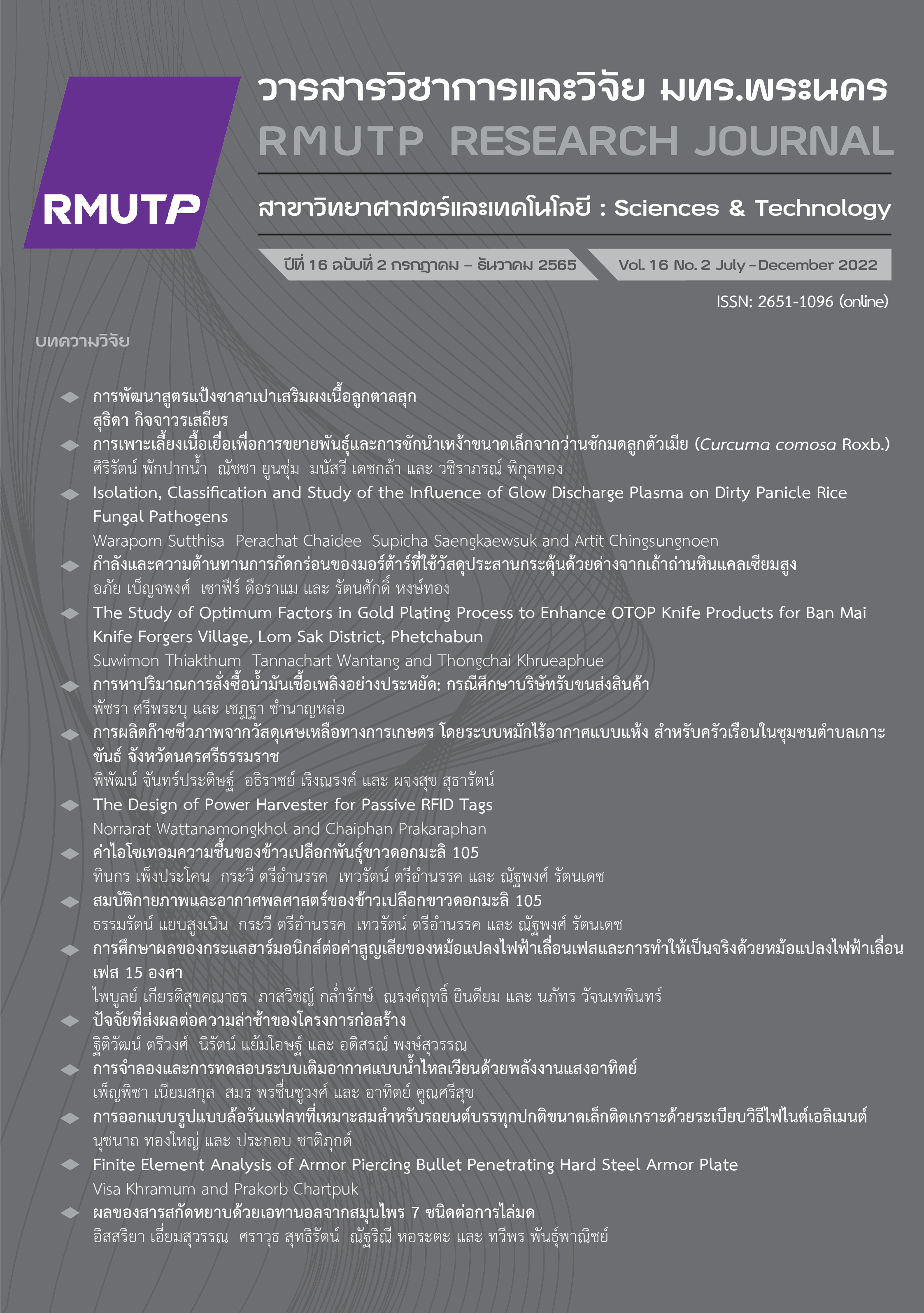Biogas Production from Agricultural Residues Using Anaerobic Dry Fermentation System for Households in the Community of Koh Khan Sub-district, Nakhon Si Thammarat Province
Main Article Content
Abstract
This research was studied and transferred the biogas production technology with the community participation using anaerobic dry fermentation system from agricultural residues. The production of renewable energy for replacing LPG in household cooking of Koh Khan Sub-district community, Cha-Uat District, Nakhon Si Thammarat Province was carried out. The efficiency of the biogas production from different co-digestion material with fresh cow manure was studied for 45 days. The experiment 1, bananas and papaya and the experiment 2, rice straw and coconut meal were used for fermented materials. It was found that the system using rice straw and coconut meal as a fermented material had a higher potential than using bananas and papaya. The system produced averaged biogas of 150 L/d and an average methane content of 67.68% respectively, within just 15 days after start-up. While bananas and papaya as fermented materials took more time with more than 30 days after start-up the system. The system produced averaged biogas of 120 L/d and an average methane content of 64.64%. For usability test, It was found that 150 L of biogas could continuously cook for 45-60 minutes. The 85% of the technology transfer recipients regarded that the knowledge gained as practical and reduced household expenditures. Additionally, the system can produce biogas for a long time without adding new fermented materials. Therefore, this biogas system could be applied to local agricultural waste for biogas production which can be expanded to other areas.
Article Details

This work is licensed under a Creative Commons Attribution-NonCommercial-NoDerivatives 4.0 International License.
ลิขสิทธ์ ของมหาวิทยาลัยเทคโนโลยีราชมงคลพระนครReferences
National Statistical Office, Thailand Annual Statistical Report: 2020. Bangkok: National Statistical Office, Ministry of Digital Economy and Society, 2020.
Department of Internal Trade, Thailand LPG Price: Apr. 2021. Bangkok: Department of Internal Trade, Ministry of Commerce, 2021.
I.I.I. Ghanem, G. Gu and J. Zhu, “Leachate production and disposal of kitchen food solid waste by dry fermentation for biogas generation,” Renew. Energ., vol. 23, no. 3–4, pp. 673-684, Jul. 2001.
S. Kusch, H. Oechsner and T. Jungbluth, “Biogas production with horse dung in solid-phase digestion systems,” Biores. Technol., vol. 99, no. 5, pp. 1280-1292, Mar. 2008.
S. Laowansiri, S. Vetayasupporn, P. Kullavanijaya, R. Anuwattana and A. Kanchak, “Biogas Production from Animal Manure and Organic Waste in Community,” Clinic Technology Project Report., Mahasarakham, Mahasarakham University, 2011.
S.K.S. Patel, P. Kumar, S. Mehariya, H.J. Purohit, J.K. Lee and V.C. Kalia, “Enhancement in hydrogen production by co-cultures of Bacillus and Enterobacter,” Int. J. Hydrogen Energ., vol. 39, no. 27, pp. 14663-14668, Sep. 2014.
Community Development Department, Koh Khan Sub-district, Cha-Uat District, Nakhon Si Thammarat Province Information: 2021, Nakhon Si Thammarat: Community Development Department, Ministry of Interior, 2021.
W. Makkapan and P. Narkthewan, “Antibacterial activity of Musa (AA group) ‘Kluai Leb Mu Nang’ and Musa (ABB group) ‘Kluai Hin’ peel extracts against foodborne pathogens,” Khon Kaen Agr. J., vol. 46 Suppl. 1, pp. 1236-1241, 2018.


